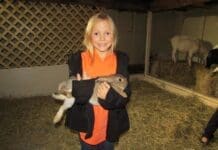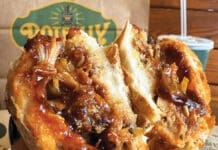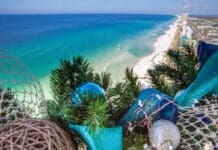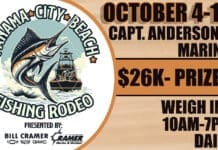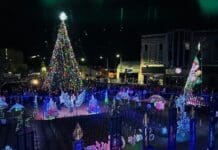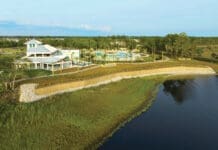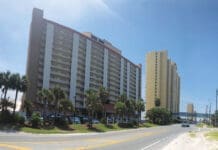By Julie McConnell, UF/IFAS Extension
European honey bees are well known for their contributions to agriculture, but did you know that there are over 300 bees that are native to Florida? This article will talk about a handful of species that may be found in your northwest Florida landscape.
The first native bee we will look at is the leaf cutter bee. Leaf cutter bees have some unusual activity; they cut semicircles out of leaves which are then used to line their nests. This solitary bee will build multiple chambers within one leaf lined nest. Each chamber contains a pollen ball she creates from pollen, nectar, and saliva. She deposits an egg within the chamber, then seals it and creates another chamber until the entire nest is full. As the eggs hatch, the larvae feed on the pollen ball left by the mother leaf cutter bee. The larva pupates in the nest, then emerges as an adult in the spring.
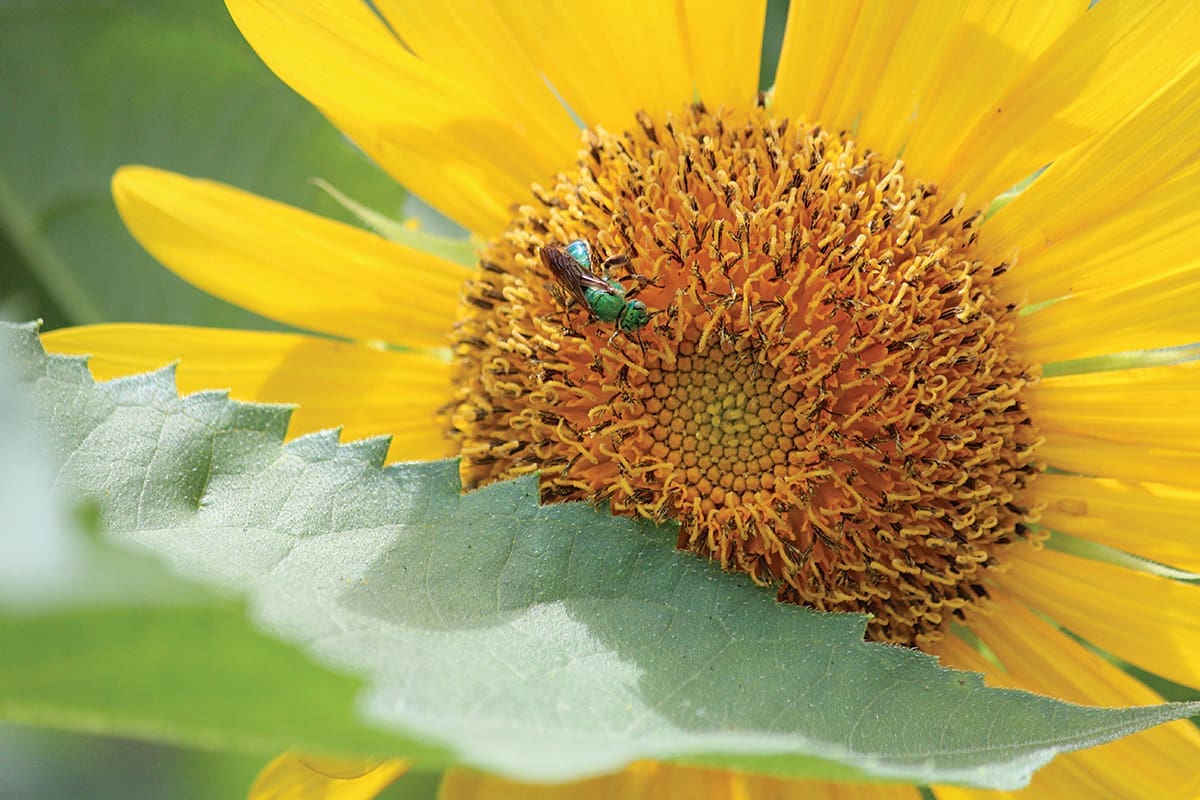
Some of the prettiest native bees with the most unfortunate name are metallic green sweat bees. These bees are iridescent green with banded abdomens and are very ornate. Like leaf cutter bees females create pollen balls for larvae to feed on which are inserted into nests. Sweat bees build tunneling nests underground. Although solitary in nature they may share an entrance hole to their nest with another female sweat bee.
One of the largest native bees are carpenter bees. Easily mistaken for bumble bees, the easiest way to tell the difference is to look for hair on the abdomen. Carpenter bees have shiny, bare abdomens while bumble bees are very hairy. Carpenter bees can be a pest since they excavate holes in wood to create nests, occasionally targeting untreated wood in fences or other structures. If you have this issue, paint untreated wood and consider offering alternative nesting sites for carpenter bees.
There are five species of bumble bees found in Florida. Bumble bees are large bees and can be distinguished from carpenter bees by the abundant hair on their bodies. Another key idea identification feature is the pollen basket (corbicula) on the hind leg used to collect pollen. Unlike the previously mentioned bees, bumble bees are social, working together using a caste system in a colony. The first brood of bumble bees are workers who pitch in to help the queen with subsequent broods. By midsummer, the queen produces a brood of males just in time for mating.
To read more about bees and other pollinators native to Florida, visit “Attracting Native Bees to Your Florida Yard” https://edis.ifas.ufl.edu/publication/IN1255
An Equal Opportunity Institution. UF/IFAS Extension, University of Florida, Institute of Food and Agricultural Sciences, Andra Johnson, Dean. Single copies of UF/IFAS Extension publications (excluding 4-H and youth publications) are available free to Florida residents from county UF/IFAS Extension offices.


